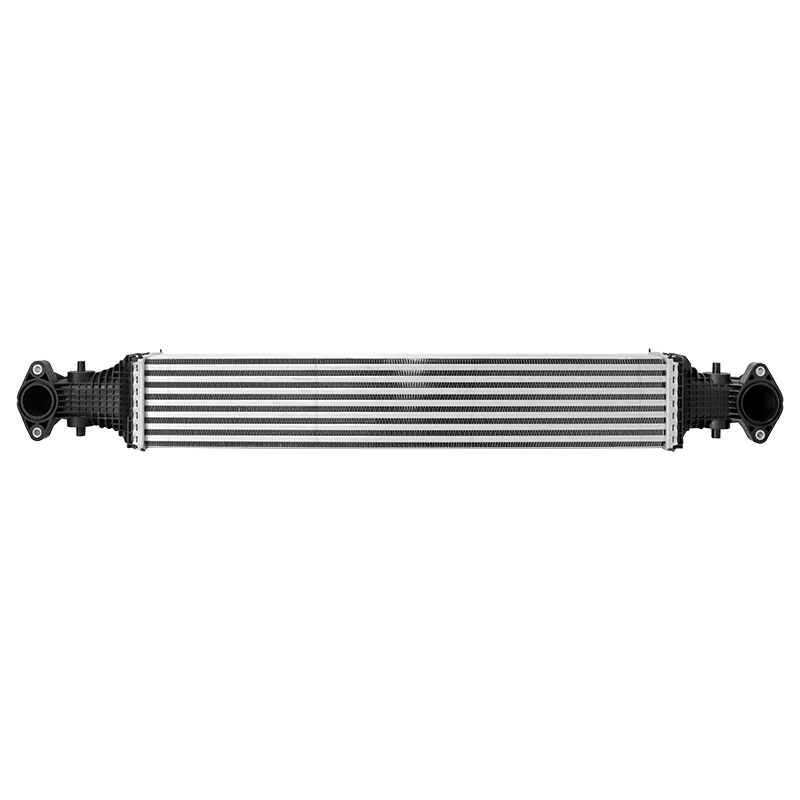2025-03-20
In the manufacturing process of HVAC Auto Intercooler, welding process is the key link to ensure its sealing and durability. Intercooler needs to withstand high pressure, high temperature and corrosive environment, so the welding quality directly affects its performance and service life. The following are specific methods and technical details to ensure welding sealing and durability:
1. Selection of welding method
(1) TIG welding (tungsten inert gas shielded welding)
Advantages: TIG welding can provide high-quality welds, suitable for materials such as aluminum alloy, with good sealing and aesthetics.
Applicable scenarios: Suitable for small batch production or occasions with extremely high requirements for weld quality.
Precautions:
Use high-purity argon as shielding gas to avoid oxidation.
Control the current and welding speed to prevent overheating from causing material deformation or embrittlement.
(2) Laser welding
Advantages: Laser welding has concentrated energy, small heat-affected zone, fast welding speed, and high weld strength.
Applicable scenarios: Suitable for large-scale production, especially for intercoolers with high precision requirements.
Notes:
The laser power and focus position need to be precisely controlled to avoid excessive penetration or insufficient welding.
The surface cleanliness of the material is high, and oil and oxide layers need to be removed in advance.
(3) MIG welding (metal inert gas shielded welding)
Advantages: High welding efficiency, suitable for thicker metal materials such as stainless steel or aluminum alloy.
Applicable scenarios: Suitable for medium-scale production, especially for cost-sensitive applications.
Notes:
It is necessary to select appropriate welding wire materials to match the base material.
Control welding parameters (such as voltage, wire feed speed) to reduce spatter and porosity.
(4) Brazing
Advantages: Suitable for thin-walled structures and parts with complex shapes, and can achieve uniform connection.
Applicable scenarios: Commonly used in the manufacture of aluminum intercoolers.
Notes:
The selection of brazing material needs to match the base material to ensure good wettability and bonding strength.
The heating temperature needs to be precisely controlled to avoid overheating and material performance degradation.
2. Material preparation and pretreatment
(1) Material cleaning
Removal of oxide layer: Use mechanical grinding or chemical cleaning (such as pickling) to remove the oxide layer and contaminants on the material surface to ensure that the welding area is clean.
Drying treatment: Ensure that there is no moisture or oil on the material surface before welding to avoid pores or cracks during welding.
(2) Material matching
Ensure that the chemical composition and thermal expansion coefficient of the welding material (such as welding wire, brazing material) match the parent material to reduce welding stress and crack risk.
(3) Assembly accuracy
Before welding, ensure that the assembly gap of the components is uniform and meets the design requirements. Too large a gap may result in insufficient welding, while too small a gap may increase the difficulty of welding.
3. Welding parameter optimization
(1) Heat input control
Excessive heat input can cause material overheating, deformation, and even grain coarsening, reducing the strength and corrosion resistance of the weld. Control the heat input within a reasonable range by adjusting the welding current, voltage, and speed.
(2) Shielding gas
For TIG and MIG welding, select a suitable shielding gas (such as argon, helium or mixed gas) and ensure sufficient gas flow to avoid oxidation of the weld.
(3) Cooling rate
Control the cooling rate after welding to avoid residual stress or cracks caused by rapid cooling. For some materials (such as aluminum alloys), preheating or post-heat treatment can be used to improve welding performance.
4. Weld quality inspection
(1) Nondestructive testing
Penetrating testing (PT): used to detect cracks and defects on the weld surface.
Radiographic testing (RT): used to check for porosity, slag inclusions or lack of fusion inside the weld.
Ultrasonic testing (UT): used to evaluate the integrity and thickness of the weld.
(2) Pressure test
After welding is completed, the intercooler is subjected to an airtightness test (such as air pressure) or a water pressure test to verify its sealing performance.
(3) Microscopic analysis
Perform metallographic analysis on the weld to observe the uniformity of the weld structure and whether there are defects (such as cracks and pores).
5. Measures to improve durability
(1) Anti-fatigue design
By optimizing the weld geometry (such as fillet transition design), stress concentration is reduced and the fatigue resistance of the weld is improved.
(2) Anti-corrosion treatment
After welding, the weld and the entire component are subjected to anti-corrosion treatment (such as anodizing, coating or plating) to enhance their corrosion resistance.
(3) Post-processing process
Heat treatment: Annealing or tempering the welded parts to eliminate welding residual stress and improve the toughness and durability of the material.
Surface polishing: Mechanical polishing or electrolytic polishing is used to improve the surface quality of the weld and reduce the risk of corrosion.
The above methods can ensure the high performance of the intercooler while ensuring its reliability and safety under harsh working conditions.